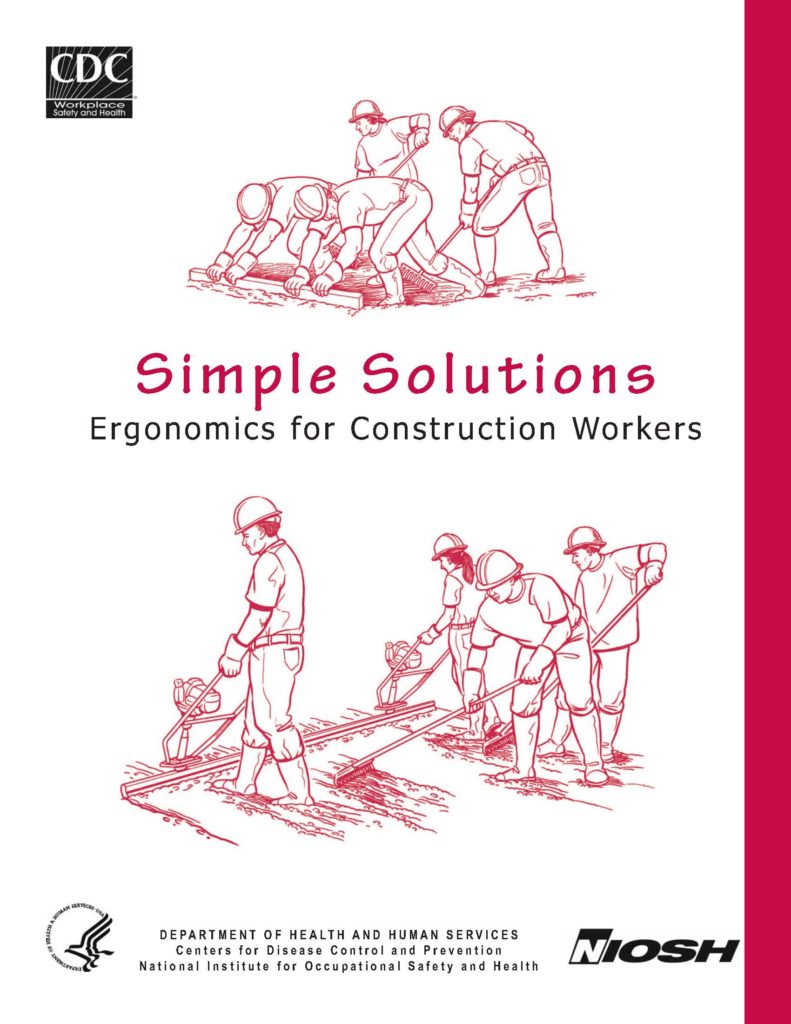Ergonomics for Construction Workers | Early Intervention Ergonomics

Photo Credit: Kinder Crane & Excavating
Simple Solutions • Ergonomics for Construction Workers
Welcome to the NIOSH comprehensive guide, Ergonomics for Construction Workers, tailored for construction workers, unions, supervisors, contractors, safety specialists, and human resources managers – essentially, anyone invested in fostering safer construction sites. In the demanding world of construction, some of the most prevalent injuries stem from tasks that push the human body to its limits. Workers frequently find themselves lifting, stooping, kneeling, twisting, gripping, stretching, reaching overhead, or contorting into awkward positions, putting them at risk of developing work-related musculoskeletal disorders (WMSDs). These disorders encompass a range of issues, including back problems, carpal tunnel syndrome, tendinitis, rotator cuff tears, as well as sprains and strains.
The mission is to offer practical, cost-effective solutions that can significantly reduce the likelihood of these injuries. We understand the unique challenges faced by construction professionals, and we are committed to making construction tasks more manageable, comfortable, and better aligned with the human body’s capabilities.
Did You Know…?
The construction industry ranks among the most hazardous sectors in the United States.
- In 1999, the number of back injuries in U.S. construction was 50% higher than the average across all industries (CPWR, 2002).
- A study (Cook et al, 1996) revealed that construction workers frequently report backaches, shoulder pain, neck discomfort, and hand-related issues.
- Material handling incidents alone account for 32% of workers’ compensation claims in construction, representing 25% of the overall cost of these claims. The average cost per claim is a staggering $9,240 (CNA, 2000).
- Musculoskeletal injuries can result in temporary or permanent disabilities, impacting both the worker’s income and the contractor’s profitability.
Things to Remember • Ergonomics for Construction Workers
Within this booklet, you’ll discover practical “Tip Sheets” illustrating how different tools and equipment can mitigate the risk of injury. Construction sites have tried and tested these solutions. The construction industry’s diversity means that not all solutions will universally apply, but often, one trade can adapt ideas developed for others.
Please note that the information provided herein offers general guidance on how some construction contractors have effectively minimized workers’ exposure to musculoskeletal disorder risk factors. It’s crucial to recognize that the examples cited may not be suitable for all types of construction work. Furthermore, while utilizing the tools and equipment outlined in this booklet can certainly reduce the risk of musculoskeletal disorders, it does not guarantee their prevention. The information shared here does not introduce new obligations or establish specific standards or guidelines.
The overarching aim of Ergonomics for Construction Workers is to present solutions that are not only effective but also cost-efficient. While some remedies may exceed a $1,000 budget, potentially posing challenges for certain contractors, we firmly believe that successful implementation will lead to a rapid return on investment in many cases.
Disclaimer: The information provided in this article is for educational purposes only and should not be considered a substitute for professional advice. Always consult with an ergonomics expert before making significant changes to your workspace setup.
More Tools & Resources from Peak Ergonomics
Contact Us About Reducing Workplace Injuries
Healthy Employees are the Bottom Line! – Learn More!


